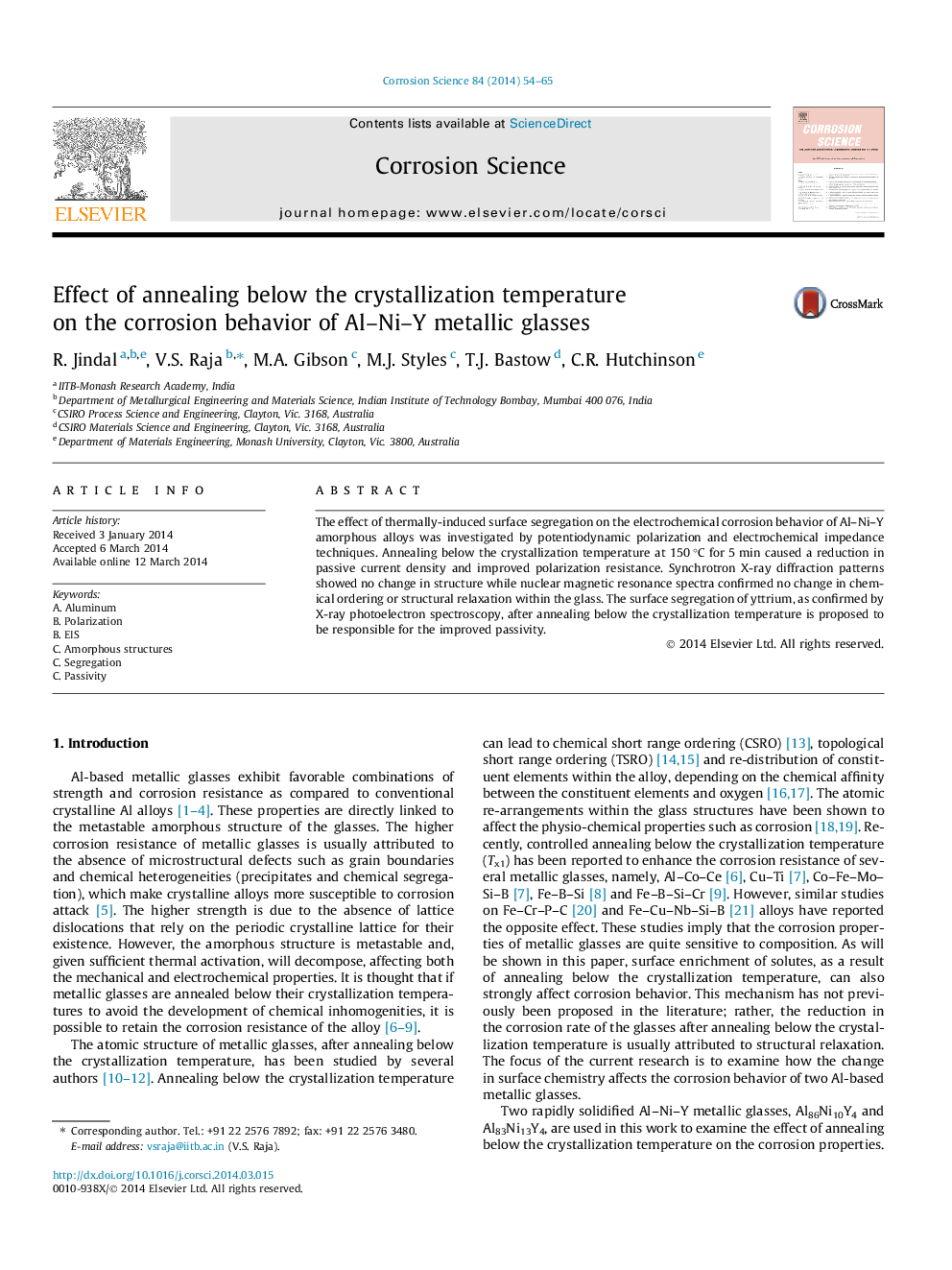| Article ID | Journal | Published Year | Pages | File Type |
|---|---|---|---|---|
| 1468845 | Corrosion Science | 2014 | 12 Pages |
•Passivity of Al–Ni–Y metallic glasses increase due to annealing at 150 °C, 5 min.•Synchrotron XRD or NMR do not reveal any changes in structure/ordering in glasses.•The surface segregation of Y is proposed for the improved passivity of the glasses.
The effect of thermally-induced surface segregation on the electrochemical corrosion behavior of Al–Ni–Y amorphous alloys was investigated by potentiodynamic polarization and electrochemical impedance techniques. Annealing below the crystallization temperature at 150 °C for 5 min caused a reduction in passive current density and improved polarization resistance. Synchrotron X-ray diffraction patterns showed no change in structure while nuclear magnetic resonance spectra confirmed no change in chemical ordering or structural relaxation within the glass. The surface segregation of yttrium, as confirmed by X-ray photoelectron spectroscopy, after annealing below the crystallization temperature is proposed to be responsible for the improved passivity.
